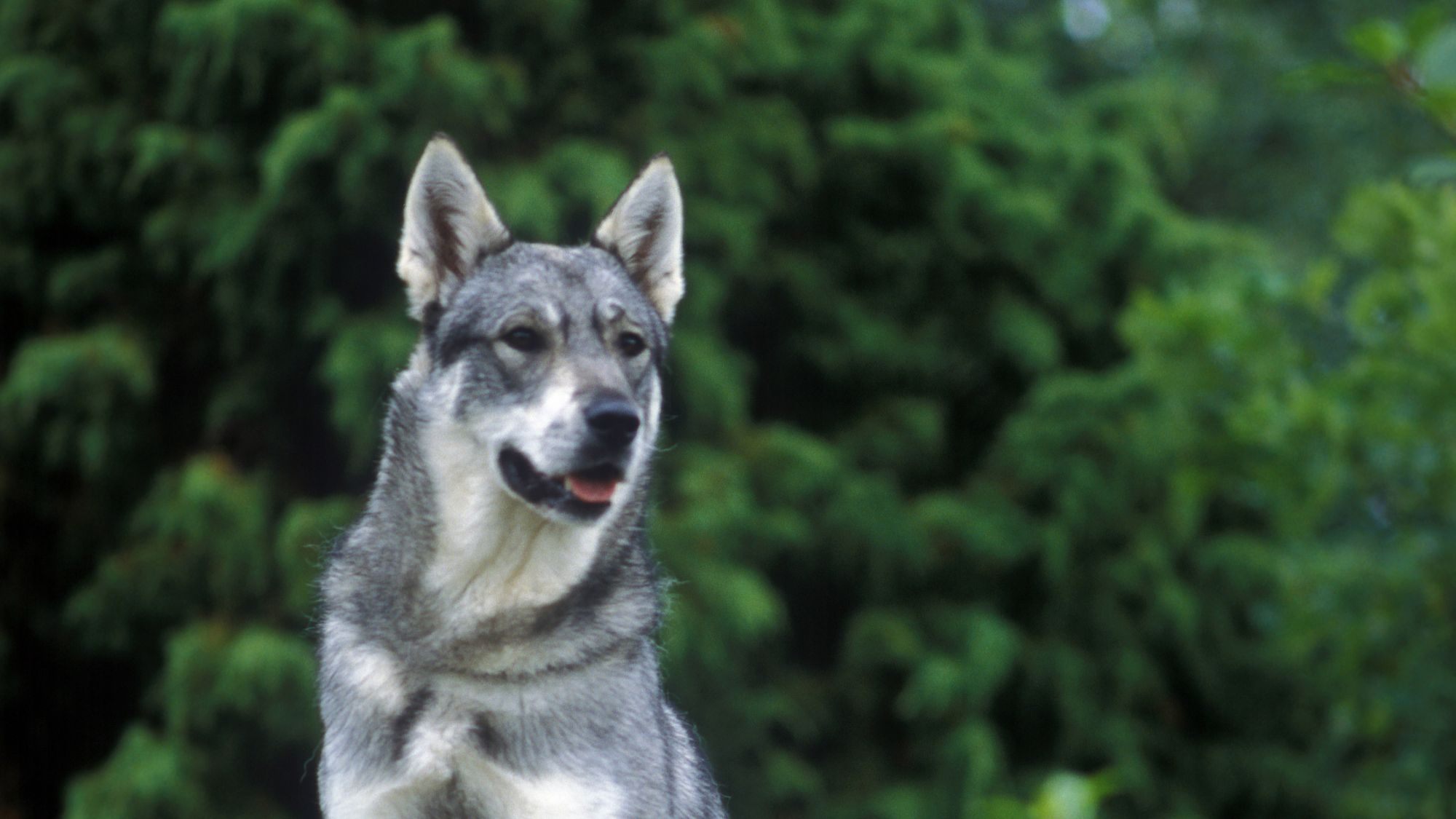
Let's talk Swedish Elkhounds
Swedish Elkhounds were born to be outdoors, as evidenced by their luscious weather-proof coats and sturdy build. Originally developed to track large and small animals alike on snowy terrain, the breed of today displays impressive stamina and perseverance, as well as a strong-willed spirit. The Swedish Elkhound is suited to an active family, who can invest in play time—come rain or shine. Indoors, they adapt well to their human’s mood. If you’re looking for a lap dog, sorry but you’ve come to the wrong place.
Official name: Swedish Elkhound
Other names: Jämthund, Swedish Moosehound, Norsk Elghund
Origins: Sweden

| Drooling tendencies: |  |
Warm weather? |  |
| Shedding level: |  |
Suited to apartment living? |  |
| Energy level (high, low, medium) *: | High | Family pet? * |  |
| Compatibility with other pets: |  |
Can stay alone? * |  |
* We advise against leaving pets alone for long stretches. Companionship can prevent emotional distress and destructive behaviour. Speak to your veterinarian for recommendations.
Every pet is different, even within a breed; this snapshot of this breed’s specifics should be taken as an indication.
For a happy, healthy and well-behaved pet, we recommend educating and socialising your pet as well as covering their basic welfare, social and behavioural needs.
Pets should never be left unsupervised with a child.
All domestic pets are sociable and prefer company. However, they can be taught to cope with solitude from an early age. Seek the advice of your veterinarian or trainer to help you do this.


| Baby age | Birth to 2 months |
| Puppy age | 2 to 12 months |
| Adult age | 1 to 7 years |
| Mature age | 7 to 10 years |
| Senior age | From 10 years |

1/7
Origins of the breed
For many enthusiasts, the Labrador Retriever remains one of the most popular all-round dogs worldwide. It’s thought that Labrador Retrievers originated from the coast of Newfoundland, Canada, where fishermen used dogs of this appearance to retrieve fish. The breed as we know it today, however, was established by the British in the early 1800’s.
The Labrador Retriever Club was founded in 1916 and the first standard followed soon after, predominantly tailored to working Labrador Retrievers who found early fame, having been originally introduced to the U.K. in the late 1800’s by Col Peter Hawker and the Earl of Malmesbury.

2/7
2 facts about Swedish Elkhound
1. The Bodyguard
The Swedish Elkhound will appoint themselves personal bodyguard of their humans—no invitation necessary. The breed forms a strong attachment to each member of their family and tends to be on high alert 24/7, signalling the arrival of strangers with a non-aggressive bark. This is a dog that most definitely has your back!
2. A real chatterbox
Their hunting heritage saw Swedish Elkhounds’ tracking down large animals by scent and keeping them at bay, letting their humans know the news by barking until they arrived on the scene. While the Swedish Elkhounds of today are no longer off hunting moose and bears, they still have a strong barking instinct. Even with some firm training, getting this under control may be a challenge.
History of the breed
The Swedish Elkhound first made its appearance thousands of years ago in Jämtland, a land-locked province stretching 315 kilometres right in the heart of the Scandinavian peninsula. It is widely believed that the breed kept company with the Vikings, assisting them with their hunting activities and accompanying them on travel expeditions.
Until 1946, the breed was considered to be the same as the Norwegian Elkhound, despite several physical differences, including coat colour, pattern, and size. It has been shown that the Swedish Elkhound doesn’t just possess wolf-like features, they actually have wolf blood in them—the result of mixing female wolves with native male dogs in the past. The breed also bears more than a passing resemblance to the Finnish Lapphund, Swedish Lapphund, and Lapponian Herder. Basically, it is understandable if you confuse them with one of these breeds.
The Swedish Elkhound has quite the resume, having been used as sled dogs, animal hunters, rescue dogs and army dogs, as well as friendly family companions. Impressive, right? But despite their many admirable qualities and even temperament, the breed remains rare outside of Sweden and was not recognised by the United Kennel Club until 2006. The American Kennel Club has still not recognised the breed.

4/7
From head to tail
Physical characteristics of Swedish Elkhounds
1. Head
A broad head with a wolf-like appearance and pointed ears.
2. Eyes
Almond-shaped dark brown eyes, with a calm expression.
3. Body
Body is rectangular in shape, solid and strong.
4. Coat
A thick double coat, light or dark grey in colour.
5. Tail
Tail is bushy and of medium size, curling gently over back.

5/7
Things to look out for
From specific breed traits to a general health overview, here are some interesting facts about your Swedish Elkhound

6/7
Caring for your Swedish Elkhound
Grooming, training and exercise tips
With their lush double coat, which means some moderate shedding, the Swedish Elkhound will benefit from regular grooming. A daily brush is optimal to prevent matting, get rid of dead hair, and keep their coats clean. Increase brushing action during the twice annual shedding season.
As a working breed, the athletic Swedish Elkhound has plenty of energy to burn, baby, burn! Long walks, a jog, a nice hike—all of the above will keep your Swedish Elkhound in great shape, feeling content and stave off any boredom.
Swedish Elkhounds are intelligent, and quick to learn, but the training challenge comes courtesy of their strong-willed streak. Be patient, be firm and keep training sessions fun above all else. Food rewards will definitely help—just be sure to count these as part of your dog’s daily food rations. Early socialisation will help make sure that your Swedish Elkhound stays cool around other canines.
7/7
All about Swedish Elkhounds
Ja (that’s “yes” in Swedish). Swedish Elkhounds are devoted to their humans and, once trained, playful with children—supervision is always required though, due to the breed’s sturdiness, which can quite literally floor young children. So long as your Swedish Elkhound is getting enough exercise, they will make for calm company indoors.
It’s a match! With “bold” as their unofficial middle name, the Swedish Elkhound is a natural at guarding (and watching) over their family. Always ready to deploy their bark in a non-aggressive way, the Swedish Elkhound will warn their humans of the presence of strangers.
Read More about Breeds


How to adopt a dog

Things to consider before getting a dog
Sources
1 - Veterinary Centers of America https://vcahospitals.com/
2 - Royal Canin Dog Encyclopaedia. Ed 2010 and 2020
3 - Banfield Pet Hospital https://www.banfield.com/
4 - Royal Canin BHN Product Book
5 - American Kennel Club https://www.akc.org/